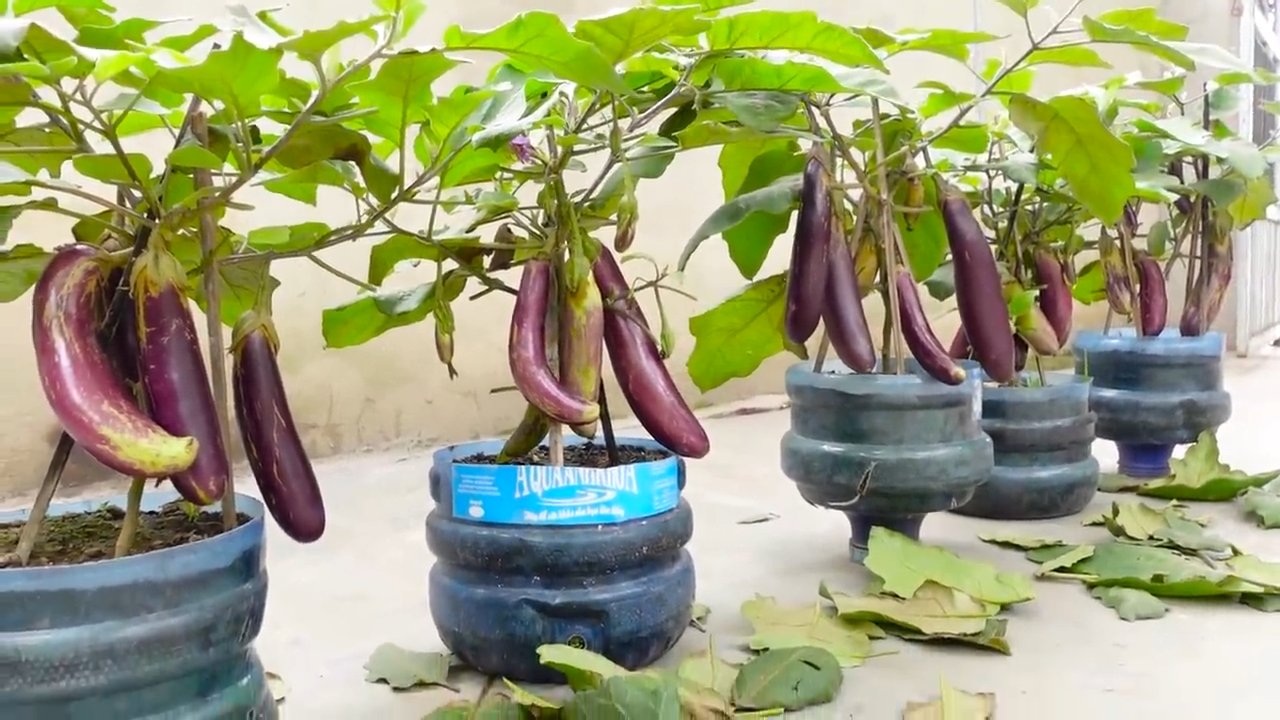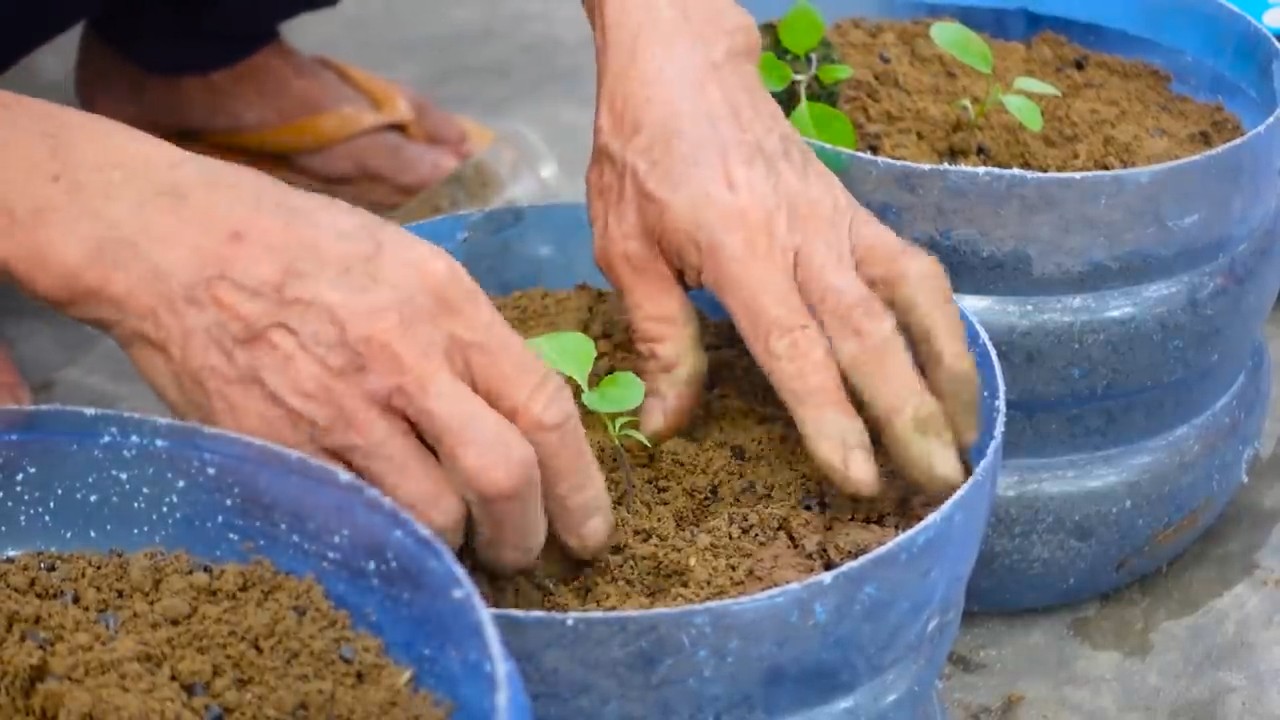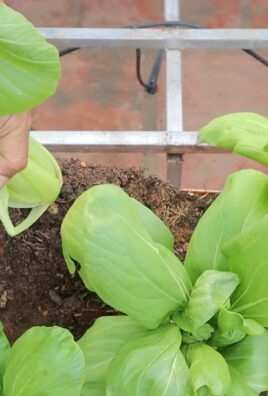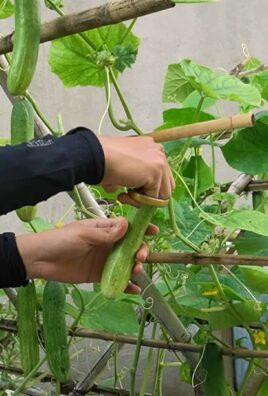Grow Fruitful Eggplants at Home – imagine plucking plump, glossy eggplants straight from your own garden! It’s a dream for many home gardeners, and I’m here to tell you it’s absolutely achievable, even if you’re a beginner. For centuries, eggplants have been a staple in cuisines around the world, from the Mediterranean to Asia, each culture developing unique and delicious ways to prepare this versatile vegetable. But beyond their culinary appeal, growing your own eggplants offers a sense of accomplishment and connection to nature that’s hard to beat.
Let’s be honest, store-bought eggplants can sometimes be disappointing – bland, tough, or just not quite as vibrant as you’d hoped. That’s where the magic of DIY home gardening comes in! This article is packed with simple yet effective tricks and hacks to help you grow fruitful eggplants at home, regardless of your garden size or experience level. We’ll cover everything from choosing the right varieties and preparing your soil to pest control and harvesting techniques. So, ditch the grocery store disappointment and get ready to enjoy the satisfaction of harvesting your own delicious, homegrown eggplants!

Eggplant Paradise: Your DIY Guide for a Bountiful Harvest
Hey garden friends! Have you always dreamed of harvesting juicy, shiny eggplants directly from your own garden? I’ll show you how to turn this dream into reality with a few simple steps and a little patience. Don’t worry, it’s easier than you think!
Preparation: The Key to Success
Before we get started, good preparation is essential. Eggplants are little divas that like it warm and sunny. So, let’s give them the perfect start!
- Choosing the right variety: There are countless eggplant varieties, from the classic purple ones to white, green, or even striped ones. Find out which varieties thrive in your region and which ones you like best. I personally love the ‘Black Beauty’ for its hardiness and great taste.
- The perfect location: Eggplants love the sun! Find a spot in your garden that gets at least 6-8 hours of direct sunlight per day. The soil should also be well-drained and rich in nutrients.
- Starting seeds indoors: Eggplants need a head start, so starting them indoors is ideal. Begin about 8-10 weeks before the last expected frost.
Step-by-Step Guide to Starting Seeds
- Prepare the seeds: Place the eggplant seeds in lukewarm water for 24 hours. This helps to speed up germination.
- Prepare the seed trays: Fill small seed pots or a seed tray with seed-starting mix. This is particularly low in nutrients and loose, ideal for the delicate seedlings.
- Sowing: Press a small hole (about 0.5 cm deep) into each pot or cell and place 2-3 seeds inside. Lightly cover the seeds with soil and gently moisten them with a spray bottle.
- Provide warmth: Eggplants love it warm! Place the seed pots in a warm place (22-25°C) or use a heating mat to encourage germination. A mini-greenhouse cover also helps to retain moisture.
- Be patient: Germination can take 1-3 weeks. Keep the soil moist, but not wet.
- Pricking out: Once the seedlings have developed their first true leaves (after the cotyledons), it’s time to prick them out. This means you carefully transplant the strongest seedlings into larger pots. Be careful not to damage the roots.
Planting Out: Out into the Open!
Once the danger of frost has passed and the eggplant seedlings are strong enough (about 15-20 cm high), they can be moved outdoors.
- Harden off: Before you plant the eggplants out for good, you should slowly acclimate them to the outdoor conditions. To do this, place them outdoors for a few hours during the day and bring them back in at night. Increase the time outdoors each day until they have fully acclimated.
- Prepare the soil: Loosen the soil well and enrich it with compost or well-rotted manure. Eggplants are heavy feeders and need a lot of nutrients.
- Planting: Dig holes that are slightly larger than the root balls of the eggplant plants. Carefully place the plants in and fill the holes with soil. Make sure that the root ball is not too deep.
- Keep your distance: Eggplants need space to grow. Maintain a distance of about 60-80 cm between plants and 80-100 cm between rows.
- Watering in: Water the newly planted eggplants thoroughly.
- Support: Especially when the eggplants are bearing fruit, the plants could use some support. Use stakes or trellises to stabilize them.
Care: Love and Attention[1][2]
Eggplants are a bit demanding, but with the right care, you will be rewarded with a rich harvest.
- Watering: Eggplants need regular watering, especially during fruit formation. It’s best to water in the morning so that the leaves can dry off during the day. Avoid waterlogging.
- Fertilizing: Fertilize the eggplants regularly with an organic fertilizer or a special eggplant fertilizer. Ensure a balanced supply of nutrients.
- Mulching: A layer of mulch made of straw or grass clippings helps to retain moisture in the soil and suppress weeds.
- Pruning: Regularly remove side shoots that grow between the main stem and the leaves. This promotes fruit formation and ensures better ventilation of the plant.
- Pests and diseases: Watch out for pests such as aphids or potato beetles. If necessary, you can use biological pesticides. Fungal diseases can also occur, especially in humid weather. Ensure good ventilation of the plants and remove affected leaves.
The Harvest: The Reward for Your Efforts[3]
The time has finally come! The eggplants are ripe and ready for harvest.
- Recognizing ripeness: The eggplants should have a shiny, plump skin and feel firm. The color should be intense, depending on the variety.
- Harvesting: Cut the eggplants with a sharp knife or garden shears. Leave a small stem on the fruit.
- Harvest regularly: Harvest the eggplants regularly to encourage the plant to produce new fruits.
Additional Tips for a Successful Eggplant Harvest
- Practice crop rotation: Do not plant eggplants in the same location every year. Crop rotation with other vegetables helps to prevent diseases and pests.
- Companion plants: Plant basil, marigolds, or tagetes near your eggplants. These plants can deter pests and promote growth.
- Eggplants in pots: You can also grow eggplants on your balcony or terrace. Choose a sufficiently large pot (at least 20 liters) and use a high-quality container potting mix.
- Overwintering: In mild regions, you can try to overwinter your eggplant plants. To do this, cut them back severely in the fall and place them in a bright, cool place.
Troubleshooting: Common Problems and Solutions
Sometimes things don’t go smoothly, but don’t worry, there’s a solution for almost every problem!
- Yellow leaves: Can be a sign of nutrient deficiency, lack of water, or waterlogging. Check the soil moisture and fertilize if necessary.
- Blossoms falling off: Can be caused by high temperatures, lack of water, or lack of pollination. Ensure adequate watering and ventilation. You can also pollinate the flowers by hand.
- Small, deformed fruits: Can be caused by nutrient deficiency or pests. Fertilize regularly and control pests if necessary.
Variety Recommendations for Beginners
- Black Beauty: Hardy, high-yielding, and easy to grow.
- Long Purple: Long, slender fruits with a mild flavor.
- White Egg: Small, white fruits with a sweetish taste.

Conclusion
So, there you have it! Growing fruitful eggplants at home doesn’t have to be a daunting task. By implementing this simple yet effective DIY trick – the strategic use of companion planting and targeted soil amendments – you can significantly boost your eggplant yield and enjoy a bountiful harvest of these delicious, versatile vegetables. This isn’t just about growing eggplants; it’s about creating a thriving garden ecosystem where your plants support each other, leading to healthier, more productive growth.
This method goes beyond simply planting seeds and hoping for the best. It’s about understanding the needs of your eggplants and proactively addressing them. The companion plants, like basil and marigolds, act as natural pest repellents, reducing the need for harmful chemicals and creating a safer environment for your family and the local ecosystem. The soil amendments, tailored to provide the specific nutrients eggplants crave, ensure they have the building blocks they need to develop strong roots, lush foliage, and, most importantly, abundant fruit.
Why is this DIY trick a must-try? Because it’s a game-changer. It’s a simple, cost-effective, and environmentally friendly way to maximize your eggplant harvest. You’ll be amazed at the difference it makes compared to simply planting eggplants in standard garden soil without any additional support. Plus, it’s incredibly rewarding to see your plants thrive and produce an abundance of delicious eggplants, knowing that you played a direct role in their success.
Consider these variations to further personalize your eggplant growing experience:
* Experiment with different companion plants: While basil and marigolds are excellent choices, other herbs like rosemary and thyme can also offer benefits. Observe your garden and see which combinations work best in your specific climate and soil conditions.
* Explore different soil amendments: Compost, aged manure, and bone meal are all excellent options for enriching your soil. You can also use commercially available organic fertilizers specifically formulated for vegetable gardens.
* Try different eggplant varieties: From classic globe eggplants to long, slender Asian varieties, there’s an eggplant for every taste. Experiment with different varieties to find your favorites and discover new culinary possibilities.
* Vertical Growing: If you are short on space, consider growing your eggplants vertically using cages or trellises. This can improve air circulation and reduce the risk of fungal diseases.
We are confident that this DIY trick will transform your eggplant growing experience. It’s a simple, effective, and rewarding way to achieve a bountiful harvest. So, grab your gardening gloves, gather your supplies, and get ready to grow the best eggplants you’ve ever tasted!
Don’t just take our word for it – try it yourself! We encourage you to implement this DIY trick in your garden and share your experiences with us. Let us know what worked well for you, what challenges you encountered, and any variations you tried. Your feedback will help us refine this method and make it even more effective for other gardeners. Share your photos and stories on social media using #HomeGrownEggplants and #DIYGardenSuccess. We can’t wait to see your amazing eggplant harvests! Remember, growing fruitful eggplants at home is within your reach!
Frequently Asked Questions (FAQ)
What exactly are companion plants, and why are they important for growing eggplants?
Companion plants are plants that are grown near each other for mutual benefit. In the case of eggplants, certain companion plants can help to deter pests, attract beneficial insects, improve soil health, and even enhance the flavor of the eggplants. For example, basil is known to repel common eggplant pests like aphids and whiteflies, while marigolds release compounds into the soil that can suppress nematodes. By strategically planting these companions alongside your eggplants, you can create a more balanced and resilient garden ecosystem.
What kind of soil amendments are best for eggplants, and how often should I apply them?
Eggplants are heavy feeders, meaning they require a significant amount of nutrients to thrive. The best soil amendments for eggplants are those that provide a balanced supply of nitrogen, phosphorus, and potassium, as well as essential micronutrients. Compost and well-rotted manure are excellent choices for improving soil fertility and structure. Bone meal is a good source of phosphorus, which is essential for root development and fruit production. You can also use commercially available organic fertilizers specifically formulated for vegetable gardens. As for frequency, it’s generally recommended to amend the soil before planting and then side-dress your eggplants with fertilizer every 4-6 weeks during the growing season. Always follow the instructions on the fertilizer packaging.
How do I know if my eggplants are getting enough sunlight?
Eggplants require at least 6-8 hours of direct sunlight per day to produce a good harvest. If your eggplants are not getting enough sunlight, they may become leggy, produce fewer flowers, and have smaller, less flavorful fruit. Signs of insufficient sunlight include pale green leaves, elongated stems, and a general lack of vigor. If you suspect your eggplants are not getting enough sunlight, try to relocate them to a sunnier spot in your garden or use grow lights to supplement the natural sunlight.
What are some common pests and diseases that affect eggplants, and how can I prevent them?
Eggplants are susceptible to a variety of pests and diseases, including aphids, whiteflies, flea beetles, spider mites, and fungal diseases like verticillium wilt and early blight. Companion planting, as discussed earlier, can help to deter some of these pests. Other preventative measures include:
* Regularly inspecting your plants for signs of pests or diseases: Early detection is key to preventing infestations from becoming severe.
* Providing good air circulation: Proper spacing between plants can help to prevent fungal diseases.
* Watering at the base of the plants: Avoid wetting the foliage, as this can create a favorable environment for fungal growth.
* Using organic pest control methods: Insecticidal soap, neem oil, and diatomaceous earth are all effective options for controlling pests without harming beneficial insects.
* Practicing crop rotation: Avoid planting eggplants in the same spot year after year, as this can help to prevent soilborne diseases from building up.
My eggplant flowers are dropping off without producing fruit. What could be the cause?
There are several reasons why eggplant flowers might drop off without producing fruit, including:
* Lack of pollination: Eggplants are self-pollinating, but they still benefit from the assistance of pollinators like bees and butterflies. If you’re not seeing many pollinators in your garden, you can try hand-pollinating your eggplants by gently shaking the flowers or using a small paintbrush to transfer pollen from one flower to another.
* High temperatures: Eggplants prefer temperatures between 70-85°F (21-29°C). If temperatures are consistently above 90°F (32°C), the flowers may drop off.
* Insufficient watering: Eggplants need consistent moisture to produce fruit. Make sure to water your plants deeply and regularly, especially during hot, dry weather.
* Nutrient deficiencies: A lack of phosphorus or potassium can also cause flower drop. Make sure to amend your soil with a balanced fertilizer.
* Stress: Transplant shock or other forms of stress can also cause flower drop. Try to minimize stress by providing your eggplants with optimal growing conditions.
How long does it take for eggplants to mature and be ready for harvest?
The time it takes for eggplants to mature and be ready for harvest depends on the variety and growing conditions. Generally, eggplants take about 60-80 days from transplanting to harvest. You’ll know your eggplants are ready to harvest when they are firm, glossy, and have reached their mature size and color. The skin should be smooth and unblemished. Gently press the skin with your thumb; if it leaves a slight indentation, the eggplant is ripe. Use a sharp knife or pruners to cut the eggplant from the plant, leaving a short stem attached.





Leave a Comment